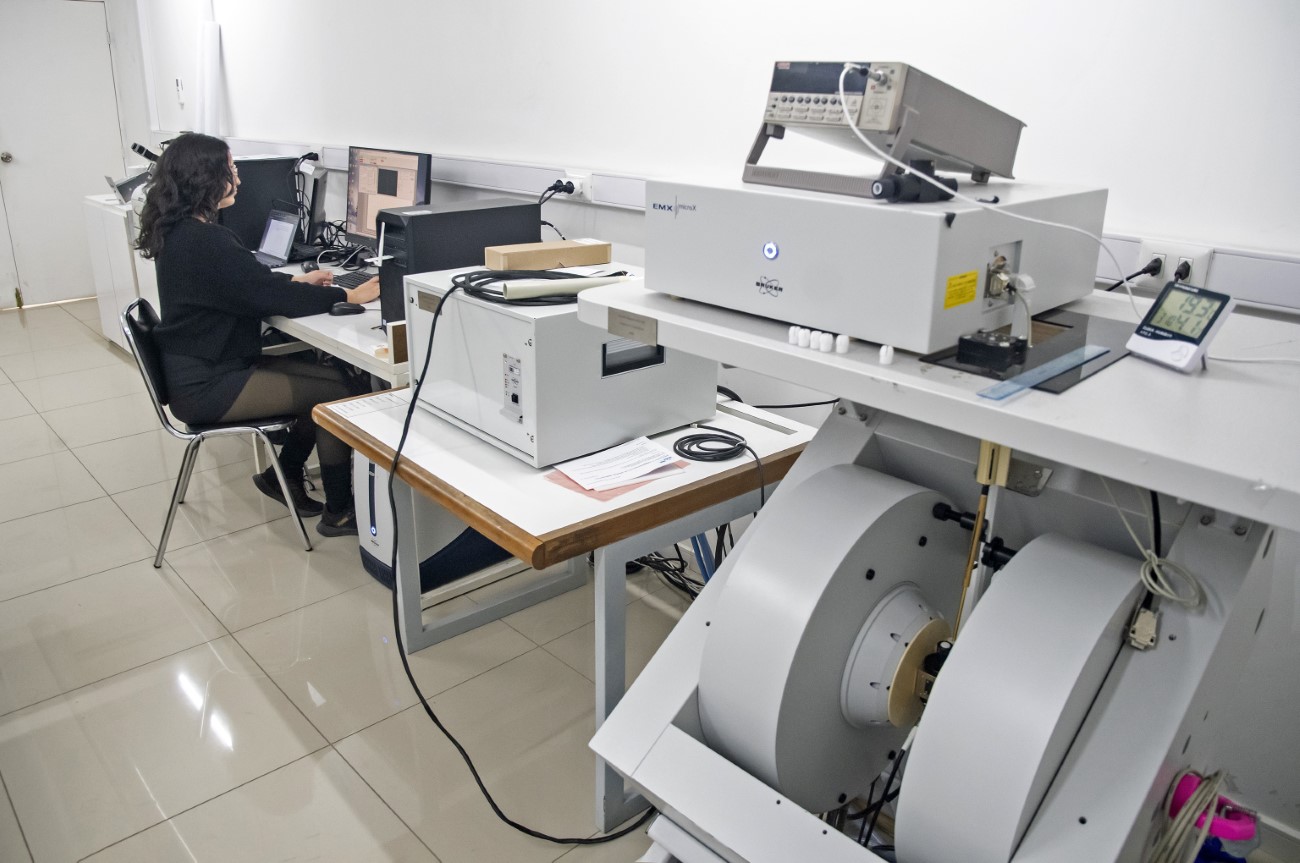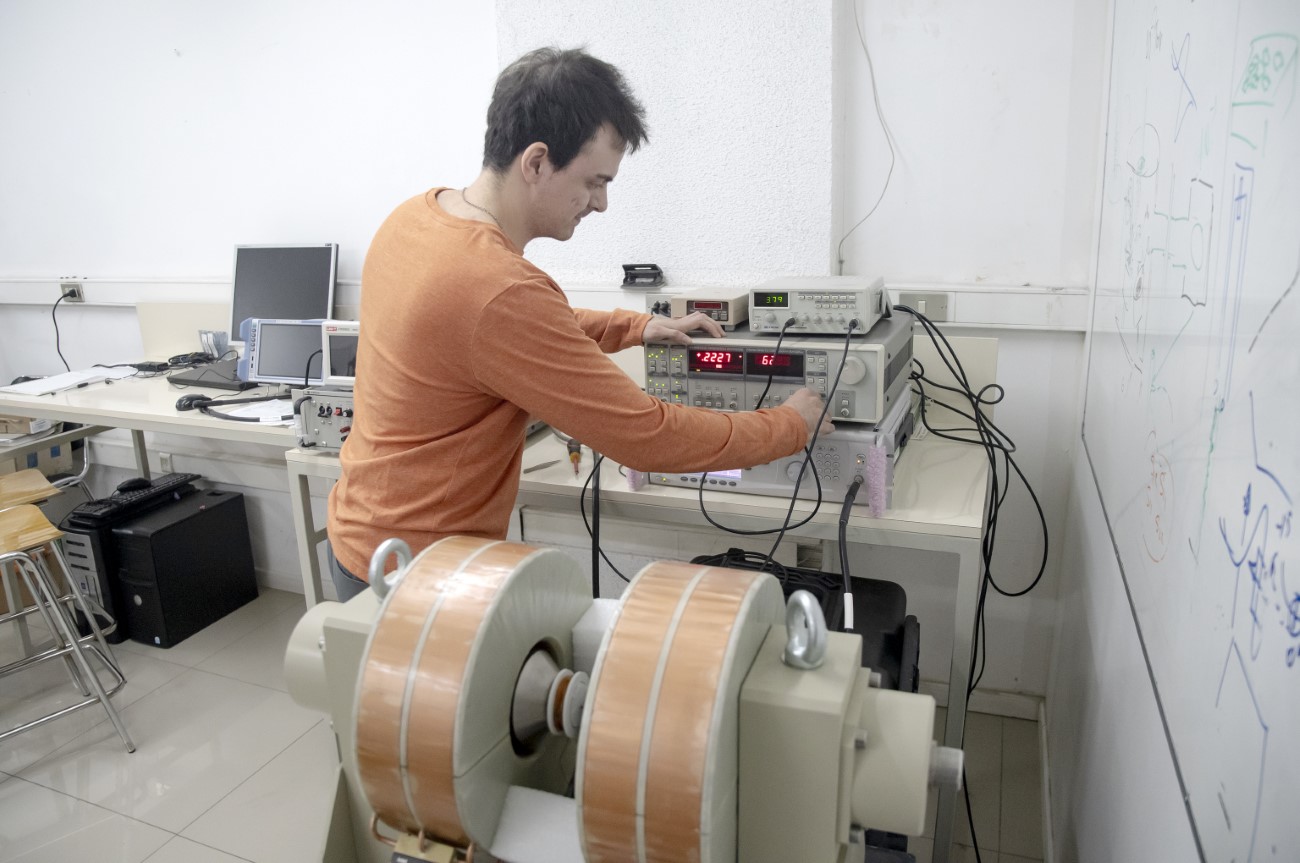Experimental Condensed Matter Physics
Magnetism and Spintronics Laboratory
Experimental Condensed Matter Physics
Magnetism and Spintronics Laboratory

Student performing ferromagnetic resonance (FMR) experiment
Student performing ferromagnetic resonance (FMR) experiment on a 20 nanometer thin layer of a ferromagnetic material.
Ferromagnetic Resonance, or FMR, is a spectroscopic technique that allows the study of the dynamics of magnetization in ferromagnetic materials. The phenomenon essentially consists of the following: when an external magnetic field is applied to a ferromagnetic sample, the magnetic moments in the sample tend to orient themselves along with the field. If, in addition, a magnetic field with the frequency of FMR is applied, the magnetic moments will perform a precessional motion around the direction of the external field. Through the relationship between the FMR frequency and the external field, the properties of the sample under study can be extracted.

Magnetometry by the Kerr effect, or MOKE (Magneto-optic Kerr effect)
Magnetometry by the Kerr effect, or MOKE (Magneto-optic Kerr effect)
When linearly polarized light is reflected from the surface of a magnetic medium, the polarization of the light changes. This type of effect is known as the magneto-optical Kerr effect (MOKE). The magnetization versus magnetic field measurements obtained through this technique allow the study of ferromagnetic thin film systems in the nanometer range. The systems studied through this technique have applications in magnetic recording and data storage technology.

Student performing broadband FMR (ferromagnetic resonance) experiment
Student performing broadband FMR (ferromagnetic resonance) experiment
In the ferromagnetic resonance equipment shown, the sample to be studied is placed in the middle of a microwave cavity at a fixed frequency. In the broadband FMR experiment the microwave frequency can be changed, allowing the study of its dependence on the external magnetic field. By means of this technique it is possible to study magnetization amortization phenomena that are relevant in the development of magnetic random access memories (MRAM).
Welcome to the Magnetism and Spintronics Laboratory. Directed by professor Roberto Rodríguez. In this laboratory we carry out experimental research in Experimental Condensed Matter Physics.
We invite you to click on each of the highlighted points to learn more about our techniques and equipment.